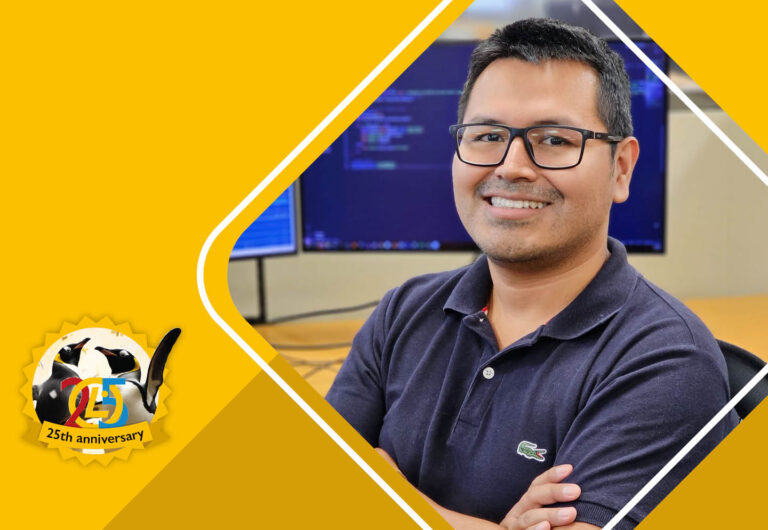From Curiosity to Automation: Diego’s Linux Journey

For many professionals, Linux is more than just an operating system—it’s a mindset, a toolset, and a gateway to career transformation. Diego’s story is a testament to how open source can empower individuals, foster problem-solving, and open doors to new opportunities.
Learning Knows No Deadline
I wasn’t always a Linux expert. My introduction to Linux came during my university years as a Telecommunications and Networking Engineering student. At the time, it was just another tool—interesting, sure, but nothing that stood out as a defining part of my future career. That perspective changed when I entered the IT industry in 2011.
It quickly became clear that Linux wasn’t just another operating system. It was everywhere—powering servers, securing networks, and automating complex workflows. The efficiency, flexibility, and power of open source technology became impossible to ignore. But for years, I only scratched the surface.
Turning a Crisis Into an Opportunity
The COVID-19 pandemic became the unexpected catalyst that pushed me to take Linux seriously. With extra time on my hands, I made a commitment: learn Linux properly, no more half measures. Linux Professional Institute (LPI) became my guide, offering a structured certification path that helped me solidify my knowledge, from the fundamentals to more advanced concepts.
I built a home lab, devoured books, explored online resources, and—most importantly—got my hands dirty with real-world practice. The deeper I went, the more fascinated I became. Linux wasn’t just an operating system; it was a force multiplier—a way to automate tasks, optimize workflows, and solve problems faster than ever before.
Automating Work, Transforming Careers
The turning point came when I joined a cybersecurity company during the pandemic. Suddenly, I had the perfect opportunity to put my Linux knowledge to the test. I noticed that many routine tasks were repetitive and time-consuming, so I turned to Linux automation.
One of my biggest wins was streamlining firewall management. The firewalls I worked with had APIs compatible with shell scripting, so I automated almost 90% of my daily tasks. Some processes that previously took 36 seconds per execution were reduced to 0.41 seconds—a staggering 87.8x speedup!
But that wasn’t all. I also developed a custom scheduling feature for firewall changes using Linux’s cron functionality—scheduling wasn’t available natively in the vendor’s software. This automation allowed teams to schedule submitted changes asynchronously, reducing errors and improving efficiency.
Beyond automation, Linux proved invaluable for troubleshooting. Many enterprise security solutions run on Linux in the background, and my deep understanding of the system helped me diagnose and resolve issues faster—an essential skill in high-pressure environments where every second counts.
Scaling Up: Linux in Finance
Today, I work at JPMorgan Chase, one of the world’s leading financial institutions, supporting operations in Brazil. In my role, Linux remains front and center. I focus on:
- Scripting and automation: Reducing manual effort, streamlining workflows, and minimizing errors
- Observability and monitoring: Using tools to analyze system performance, create dashboards, and set up alerts for early issue detection
- Infrastructure optimization: Enhancing system reliability and ensuring smooth operations across critical financial services
Whether I’m preventing outages, improving efficiency, or driving innovation, Linux is at the core of everything I do.
Certifications: The Key to Growth
My commitment to professional development is reflected in my certifications, including:
- LPIC-1 (Linux Administrator)
- LPIC-2 (Linux Engineer)
- Linux Foundation Certified SysAdmin (LFCS)
- Certified Kubernetes Application Developer (CKAD)
These certifications not only validated my expertise but also expanded my ability to tackle complex IT challenges. Now, I’m preparing for LPIC-3, which will deepen my knowledge of enterprise Linux environments.
A Decision That Changed Everything
Looking back, I believe that investing in Linux and earning LPI certifications was one of the best decisions I’ve ever made. It shaped my technical skills, opened doors to new career opportunities, and allowed me to make a real impact in my field.
Linux taught me an essential lesson: learning is always a worthwhile investment. The world of open source is constantly evolving, and I can’t wait to continue growing, contributing, and helping others discover its power.
<< Read the previous post of this series | Read more LPI success stories here >>
